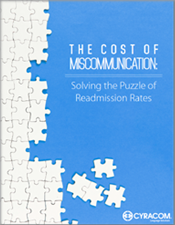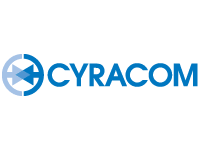Resource:
The Cost of Miscommunication: Solving the Puzzle of Readmission Rates
This article covers the Affordable Care Act's penalization of unnecessary hospital readmissions, and the reasons Limited-English-Proficient patients are overrepresented in those readmissions.
 Hospitals nationwide continue to face increased fines under a portion of the Affordable Care Act. In 2014, more than 2,600 facilities nationwide – out of roughly 3,500 eligible – failed to meet the ACA’s criteria and will face stiff financial penalties. How can hospitals lower readmission rates? From hiring community health coaches to encouraging doctors to talk with patients more, many promising strategies have emerged since the law’s enactment. In this white paper, we’ll share those strategies and show how language access may play a key role in helping your hospital become ACA compliant.
Hospitals nationwide continue to face increased fines under a portion of the Affordable Care Act. In 2014, more than 2,600 facilities nationwide – out of roughly 3,500 eligible – failed to meet the ACA’s criteria and will face stiff financial penalties. How can hospitals lower readmission rates? From hiring community health coaches to encouraging doctors to talk with patients more, many promising strategies have emerged since the law’s enactment. In this white paper, we’ll share those strategies and show how language access may play a key role in helping your hospital become ACA compliant.
Defining the Problem
When patients return for additional treatment of the same issue within 30 days of release (readmission), hospitals receive penalties if the rate surpasses a given threshold.
What kind of penalties? Medicare can cut its already low-margin reimbursements by as much as 3%. The greater proportion of Medicare patients at a facility, the bigger the financial risk hospitals experience under the new system.
If the penalties seem severe, consider the scope of the issue. The Centers for Medicare and Medicaid Services (CMS) estimates that avoidable readmissions comprise $17 billion of the $26 billion spent on return patient visits.
